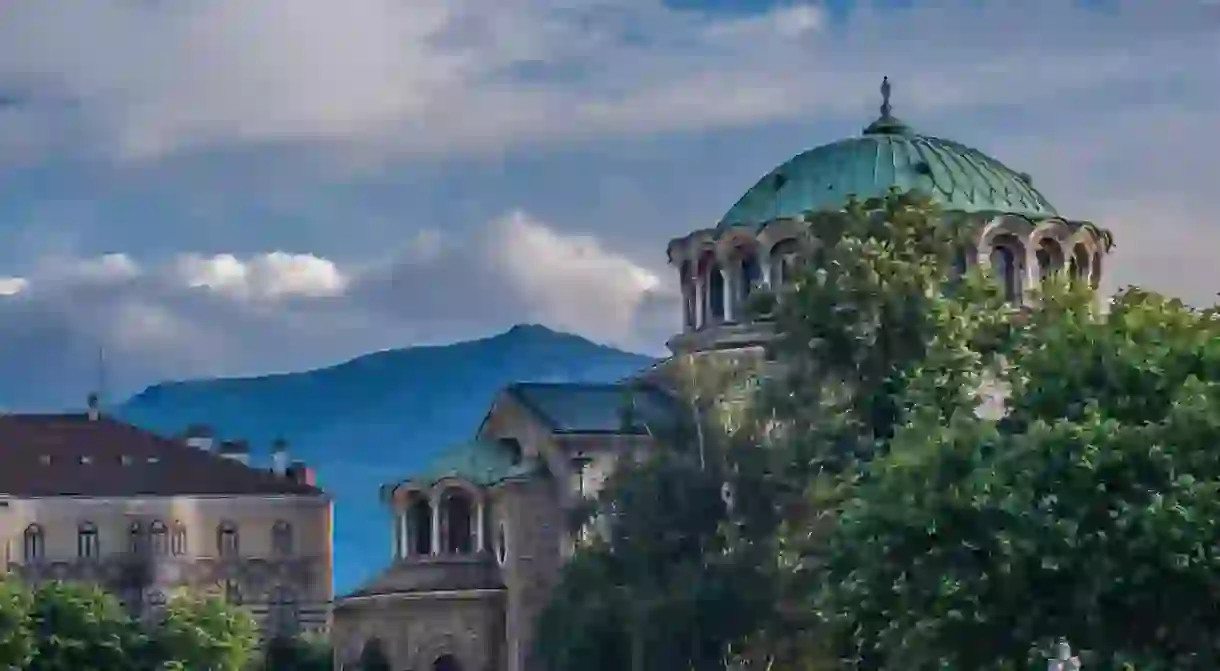Reasons You Should Visit Bulgaria's Capital Sofia

Bulgaria’s capital Sofia is a vibrant canvas portraying the past, present and future of its people, land and culture. The architecture, cuisine and lifestyle of the Sofians reflects the Roman, Greek and Ottoman impact on this Balkan foothold. Green spaces stand alongside dazzling museums and galleries, century-old cuisine is given a modern twist – and even the drinking water is worth writing home about. Here are the reasons why a Bulgarian itinerary isn’t complete without a long stop in Sofia.
Did you know – Culture Trip now does bookable, small-group trips? Pick from authentic, immersive Epic Trips, compact and action-packed Mini Trips and sparkling, expansive Sailing Trips.
To Eat Your Way Through History
Sofia might feel like a youthful, modern city, but remnants of its 7,000 year-old history can be found in nearly every item on a restaurant’s menu. These hearty Balkan dishes feature a dash of Mediterranean influence, thanks to the Greeks and Romans who once laid claim to the land. Two dishes to keep an eye out for are banitsa and tarator; the former is a baked pastry filled with eggs and feta cheese, while the latter is a Balkan version of the Greek tzatziki. Both can be found in every corner of the city.
To Reflect on Sofia’s Religious Tolerance
With so many cultures calling Sofia home over thousands of years, it’s no surprise that multiple religions have taken root in the city. Though the Eastern Orthodox church is the most prevalent, the Catholic, Muslim and Jewish faiths also have ample places of worship. There is no better example of Sofia’s polytheistic culture than the Square of Religious Tolerance, where four temples (Saint Nedelya, Banya Bashi, Saint Joseph and Sofia Synagogue) border the space. Standing here you’ll see how harmoniously Sofia has embraced religious diversity.
To Discover Where Bulgarian Culture and History Converge

Sofia has dozens of museums and galleries where visitors can learn more about the past and present of Bulgaria’s people. Start as far back as possible with stops at the National Archaeological Museum and the National Museum of Natural History. Come a little closer to the present with a journey through the National History Museum and Sofia History Museum. Finally, see the history, culture, and soul of the country on display at the National Art Gallery, Sofia City Art Gallery, the Museum of Contemporary Art, and the Socialist Art Museum.
To Savour the City From the Outside
Even hard-to-please travellers could spend days dashing in and out of Sofia’s many museums and galleries. To devote so much time to the indoors, however, means missing out on all of the action happening in Sofia’s parks. The warmer months bring festivals, performances, films, music and more to outdoor spaces like Crystal Garden, Yuzhen Park, the National Theater’s Garden, and Zapaden Park. On the off-chance those places aren’t playing host to a formal event, each of Sofia’s parks still provides plenty of entertainment: as a spot for picnicking, playing, and partaking in a bit of rest and relaxation with the locals.
To Add Mountain Climbing to a City Break

In Sofia visitors don’t need to choose between enjoying a city break or an outdoor adventure. A quick 30-minute cab from the city centre is all it takes to get acquainted with Sofia’s surrounding forest. Vitosha Mountain looms over the city’s outskirts, inviting intrepid climbers to summit its snowy Cherni Vrah Peak. The reward for an afternoon spent hiking the trail? A lovely cuppa at the teahouse that sits atop the mountain.
To Support Sofia’s Performing Arts

Theatre-goers and concert lovers will find a haven for performing arts on the eastern side of the city. The Sofia Opera and Ballet, Sofia Philharmonic, Ivan Vazov National Theatre, Teatar Vazrajdane and several other theatres are within a few blocks of Sofia University, while the Park Zaimov is home to two more theatres. If you’re hoping to catch some concerts on an extended Sofia vacation, spend an evening at the Sofia Opera House; these famous Bulgarian singers can also be found performing in outdoor spaces around the city during the summer months.
To Raise a Glass of Rakia to Bulgarian Culture
Russia has vodka, Greece has ouzo, Bulgaria has rakia. The national alcohol of Bulgaria is typically distilled from fruits like apricots, plums and grapes. A light yellow or transparent colour, this aperitif’s taste is similar to a Japanese sake. Rakia can be found on most restaurant menus and in many shops, but lucky travellers may get a chance to try homemade rakia if you hit it off with the locals. When toasting with rakia (or indeed any alcoholic beverage in Bulgaria) remember to say nazdrave (pronounced naz-drah-veh) which means both “cheers” and “bless you”.
To Drink in the Splendour of Sofia’s Streets
Strolling through Sofia’s neighbourhoods is an attraction in itself. From the immaculately manicured gardens in Ivan Vazov to the non-stop party town of Studentski grad, there’s always something to see and do just by simply walking around. Another perk of Sofia is that the drinking water is fresh and free. Mineral springs throughout the city have been equipped with drinking fountains where anyone can wet their whistle. One hot spring to visit is right behind the Banya Bashi mosque in the Square of Religious Tolerance – just be sure to bring your own bottle.













